Saint-Saëns - Chamber Works
Gramophone
Friday, March 6, 2015
Recommended recordings of Saint-Saëns's chamber works
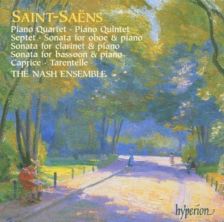
Bassoon Sonata in G, Op 168. Caprice sur des airs danois et russes, Op 79. Clarinet Sonata in E flat, Op 167. Oboe Sonata in D, Op 166. Piano Quartet in B flat, Op 41. Piano Quintet in A minor, Op 14. Septet in E flat, Op 65. Tarantelle in A minor, Op 6
Nash Ensemble (Philippa Davies fl Gareth Hulse ob Richard Hosford cl Ursula Leveaux bn Mark David tpt Marianne Thorsen, David Adams, Benjamin Nabarro vns Lawrence Power va Paul Watkins vc Duncan McTier db Ian Brown pf)
Hyperion CDA67431/2 (134’ · DDD). Buy from Amazon
Saint-Saëns’s chamber music fares better in the concert hall than the recording studio, perhaps because musicians tend to listen less to academic name-calling than to the music itself. The three late wind sonatas in particular have received far fewer recordings than their status as repertoire staples deserves. Try the kinky-Baroque first movement of the Oboe Sonata, jauntily phrased by Gareth Hulse, or the animato second of the Clarinet Sonata, garbed in rich Mozartian cloth by Richard Hosford. Or, particularly, the Bassoon Sonata, for its fresh and gentle wit and skirting of cliché: Ursula Leveaux does it proud, with especially luscious tone in the opening Allegretto.
Surprises are thinner on the ground in the earlier works but none is less than, to echo Ravel’s assessment, ‘finely put together’. Hummability quotient is high in the Piano Quartet and Quintet, and off the scale in the Septet. The late Lionel Salter used to complain that recordings of the Septet tend to sound like a trumpet concerto; not this one. If you employ hit artists like Maurice André they will tend to hog the microphone but, happily, Mark David is a more sensitive soul who has fully imbibed the Nash’s joyous spirit of corporate music-making, and Hyperion’s engineers have placed him at a respectable distance.
If anything it is Ian Brown’s piano that takes centre stage, and that’s no bad thing, except in the extensive fugal finales to the Piano Quartet and Quintet where Saint-Saëns, most unusually, seems to over-run himself. Sheer delight.
Additional Recommendations
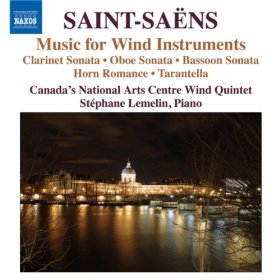
Caprice sur des airs danois et russes, Op 79. Clarinet Sonata, Op 167. Oboe Sonata, Op 166. Bassoon Sonata, Op 168. Romance, Op 67. Tarantella, Op 6
Canada’s National Arts Centre Wind Quintet (Joanna G’froerer fl Charles Hamann ob Kimball Sykes cl Christopher Millard bn Lawrence Vine) Stéphane Lemelin pf
Naxos 8 570964 (64’ · DDD). Buy from Amazon
Saint-Saëns’s acute ear for the personality of particular instruments is nowhere more conspicuous than in the three sonatas that he composed in the last year of his life, 1921. These final forays into the realms of chamber music also show him winnowing his style, so that, while still having recourse to the generous fund of lyricism on which he had always been able to capitalise, he now wrote with conscious economy of means. The members of Canada’s National Arts Centre Wind Quintet appreciate and convey these facets in performances that encapsulate the Gallic charm and finesse of the music.
At the same time, the Oboe Sonata’s mix of the pastoral and the perky is nicely established, as is the blend of warmth and bravura in the Clarinet Sonata, with its lowest register explored in the solemn Lento movement and its capacity for exuberance in the finale. In the Bassoon Sonata, Saint-Saëns again reveals his ability to write music of a character individually tailored to the instrument’s timbre and tonal palette, here within the context of a piece that takes Baroque compositional principles as a model.
The unifying feature of this programme is the excellently judged piano-playing of Stéphane Lemelin, who adds a discerning range of colour and spirit to the performances.
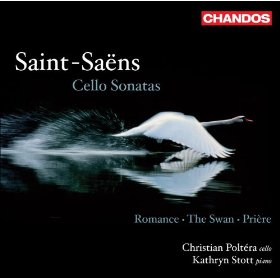
Cello Sonatas – No 1 in C minor, Op 32; No 2 in F, Op 123. Prière, Op 158. Le carnaval des animaux – The Swan. Romance in F, Op 36
Christian Poltéra vc Kathryn Stott pf
Chandos CHAN10552 (65’ · DDD). Buy from Amazon
Inevitably, ‘The Swan’ from The Carnival of the Animals features on this disc of Saint-Saëns’s cello music – and it is played with gliding, liquid lyricism by Swiss cellist Christian Poltéra across the smooth surface of Kathryn Stott’s arpeggios. But the chief interest lies in the two sonatas.
The First in C minor is, within the context of Saint-Saëns’s long life, a fairly early work, written in 1872 when he was in his mid-30s. It combines passion, energy and rigour in the two outer movements, with a central one that envelops a chorale-like theme in a mood of solemn reflectiveness. Saint-Saëns certainly knew how to tap the technical resources of his soloists and Poltéra and Stott are as one in playing some fleet, taxing passagework with fluency and power, Poltéra’s mellow tone adding a dimension of poignancy and shapely phrasing that traces and defines the music’s surging contours.
Some three decades after the First Sonata, Saint-Saëns wrote the Second in F (1905), again a piece that fuses beguilingly melodic, restrained touches with a good deal of urgent, athletic activity in the outer movements. The slow Romanza is one of Saint-Saëns’s most seductive inventions and in the set of variations forming the second movement his ingenuity in terms of texture, contrapuntal workings and lively instrumental interplay is finely honed. The disc is invaluable for these two works alone, but ‘The Swan’ and two other miniatures – a Prière and a Romance – show how acute Saint-Saëns was in matching musical ideas to instrumental timbre.
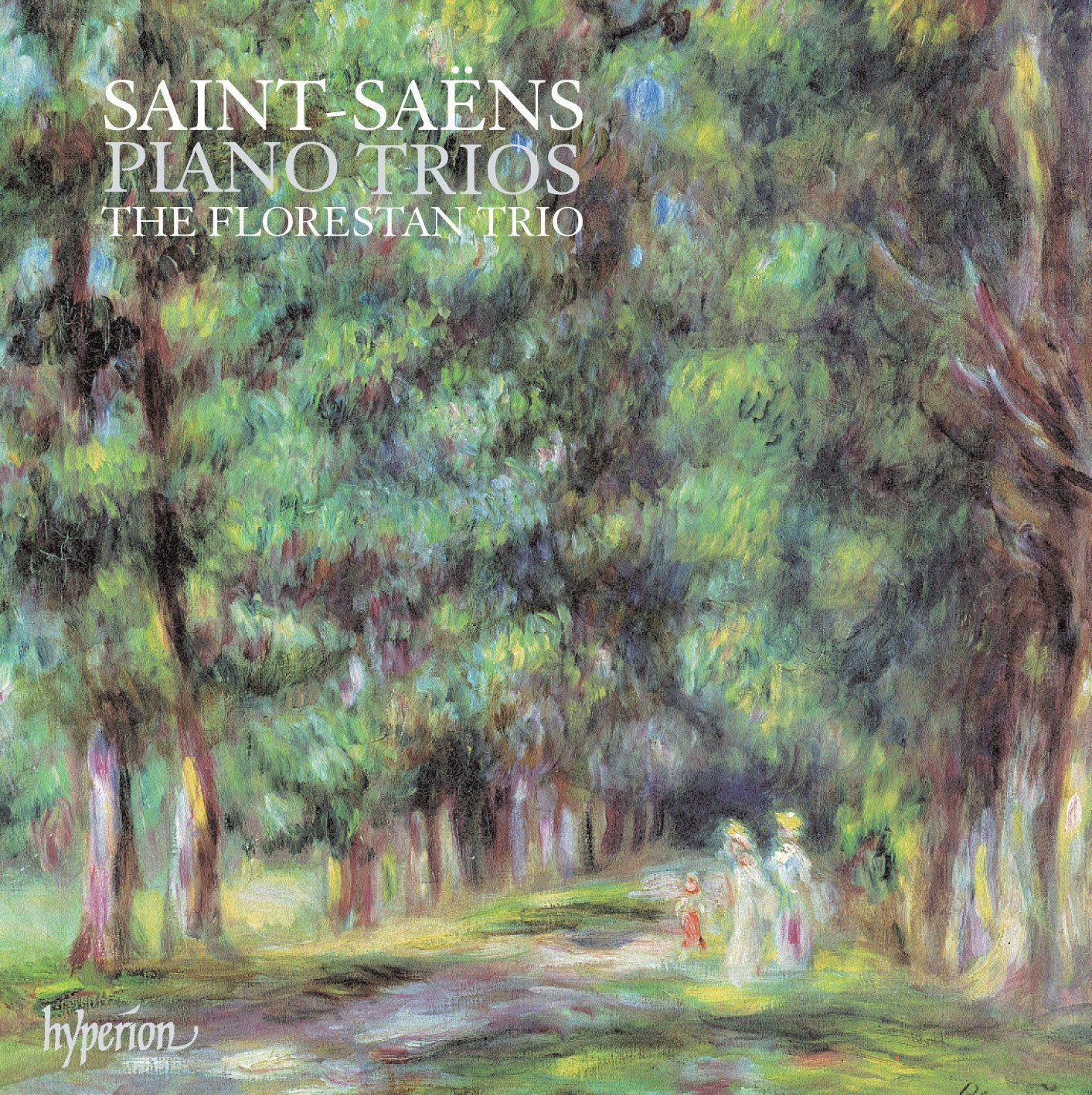
Piano Trios – No 1 in F, Op 18; No 2 in E minor, Op 92
Florestan Trio (Anthony Marwood vn Richard Lester vc Susan Tomes pf)
Hyperion CDA67538 (60’ · DDD). Buy from Amazon
Well, the Florestan Trio have done it again. Indeed, such is the cumulative emotional impact of these performances that tears welled up during the wonderful fortissimo climax of the E minor Trio’s first movement – even before the astonishing intensity of the final, precipitous Allegro. ‘Cumulative’ because most of the time the Florestan prefer stealth and suggestion; they don’t wear their hearts on their sleeves. Instead they offer, like Saint-Saëns’s art, a filigree lightness and clarity that somehow twists itself into an ever-deepening pattern of turmoil.
Listen to the underlying wistfulness in the F major Trio: how the élan of the first movement’s final chords provides a springboard into a cheerful bucolic landscape that is nevertheless crossed with clouds – this brought about by a web of delicate rhythmic and tonal shading in the string-playing stretched over Susan Tomes’s dancing, pellucid framework.
Or the maturity and self-confidence in the E minor: nothing is forced, everything flows – from the stormy first movement through the lighter central movements (and here the languid descending phrases of the Andante con moto are beautifully sculpted by both Marwood and Lester) to the complex yet never turgid imitative writing of the last. Recorded sound and accompanying notes are, of course, impeccable.
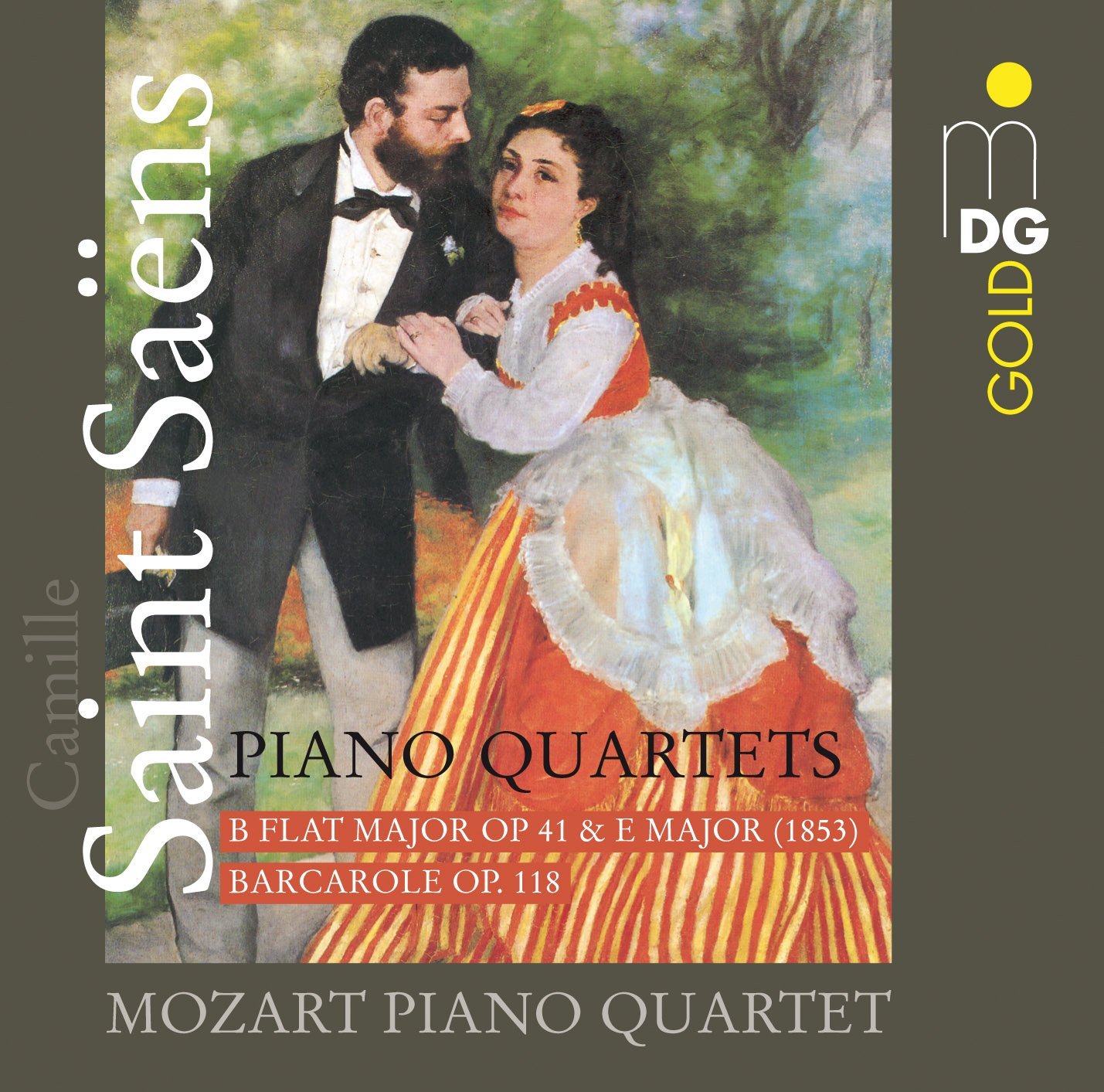
Piano Quartets – in B flat, Op 41; in E. Barcarolle, Op 108
Mozart Piano Quartet (Mark Gothoni vn Hartmut Rohde va Peter Hörr vc Paul Rivinius pf)
Dabringhaus und Grimm MDG943 1519-6 (58’ · DDD). Buy from Amazon
Saint-Saëns is so well known nowadays for his symphonies, concertos and orchestral works that it is easy to overlook his substantial chamber output. Instrumental music was his main love, much against the grain of French musical life in the mid-19th century. Listen to the sparkling Scherzo (Poco allegro più tosto moderato) of the Op 41 Piano Quartet (1875), or the lilting central Andante of the earlier E major piece, a three-movement student quartet of considerable imagination completed in 1853, when he was just 18.
It is unclear whether this early Quartet was played in its composer’s lifetime; by the time chamber music became more fashionable in French music-making in the 1880s, it might have seemed too old-fashioned to programme. Yet it is not an immature work except by the standards of Saint-Saëns’s later works, not least the Op 41 Quartet, which has a power and brilliance of execution that make it worthy of comparison with Schumann’s Op 47.
The Mozart Piano Quartet play both quartets with considerable élan, evoking the spirit of their namesake in Saint-Saëns’s beautifully balanced, often gossamer textures. Where power is required, though, as in the outer movements of Op 41, they respond with assurance. The delightful makeweight of the Barcarolle completes a splendid disc.











